At a Glance
An Asian tinplate manufacturer faced the challenge of optimising its workforce and service contract expenditure to ensure effective and efficient operations. Renoir Consulting was engaged to analyse workload distribution, organisational structure, and service contract efficiency. This case study uncovers how the client achieved an 18% reduction in manpower cost and a $0.35 million decrease in service spend.
Key results
Achieved a reduction of over 16% in manpower support and commercial services.
Realised approximately $1M million in aggregate benefits
Secured a 10% reduction in spend value from analysed service contracts.
Background
The tinplate sector is a critical part of the packaging industry, supplying tin-coated steel sheets primarily used for manufacturing cans and containers in food and beverage, edible oils, processed foods, paints, pesticides, aerosols, and battery casings. Tinplate manufacturing involves complex processes like cold rolling, annealing, temper rolling, and tin coating, which require skilled labour to ensure consistent product quality and minimise defects. A well-trained workforce helps maintain high overall equipment effectiveness (OEE) and throughput, directly impacting profitability.
The client is a leading tinplate producer in Asia, catering to a significant portion of both the prime and overall domestic market. A subsidiary of a major steel conglomerate, it serves diverse industries, including edible oils, paints, processed foods, and aerosols. With a workforce spanning decades, the company exports 20-25% of its products globally, primarily to Southeast Asia, the Middle East, and Europe.
Analysis
The client recognised the need to ensure an optimum number of positions to run operations effectively and efficiently.
They aimed to reduce manpower through various means, such as technology adoption and workload redistribution. Furthermore, significant spending on service contracts (including cleaning and IT support) required optimisation.
The initial phase of the project involved an in-depth analysis of the client, encompassing workload distribution, organisational span of control, roles and responsibilities, and existing service contracts to identify areas for efficiency improvements and cost reduction.
Project Approach
The project was structured into two primary workstreams: Manpower and Service Contracts.
Workstream 1: Manpower Rationalisation
- Conducted “As-Is” process mapping and value-added/non-value-added (VA/NVA) assessments.
- Identified efficiency enablers like workload redistribution and organisational restructuring.
Workstream 2: Service Contract Optimisation
- Performed spend analysis and vendor evaluations.
- Implemented contract consolidation and introduced competitive bidding.
- Governance: Established Management Action Teams (MATs) and a Steering Committee (SC) for oversight and sustainability.
Ready for a change in your organisation?
Implementation
A detailed analysis of job volume, frequency, and criticality was undertaken.
Manpower Stream:
- Redesigned job descriptions and organisational hierarchy to clarify roles.
- Introduced cross-functional partnerships to reduce transactional workloads.
Service Contracts Stream:
- Consolidated contracts and renegotiated terms with vendors.
- Instituted audit mechanisms to ensure compliance with service-level agreements (SLAs).
- Collaborative task forces, comprising client stakeholders and Renoir consultants, executed solutions across 32 operational areas.
Results
Manpower Efficiency: A 16% reduction in support staff and commercial services, contributing to $0.63 million in savings.
Contract Savings: 10% reduction in service contract expenditures, equating to $0.36 million annually.
Sustainable Impact: The client transformed into a leaner organisation with improved spans of control, more explicit role definitions, and robust contract management systems. Future savings are anticipated as additional vendor negotiations conclude.
*Client-specific details have been intentionally omitted to maintain strict discretion.
Implement tailored strategies for sustainable business growth.












